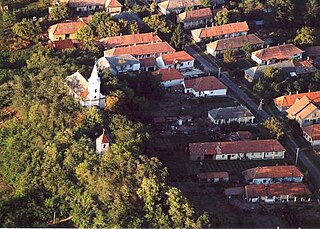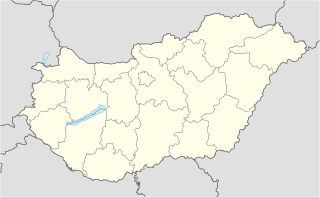
Central Europe is the region comprising the central part of Europe. Central Europe occupies continuous territories that are otherwise sometimes considered parts of Western Europe, Southern Europe, and Eastern Europe. The concept of Central Europe is based on a common historical, social, and cultural identity.

Hungary is a country in Central Europe. Spanning 93,030 square kilometres (35,920 sq mi) in the Carpathian Basin, it borders Slovakia to the north, Ukraine to the northeast, Romania to the east and southeast, Serbia to the south, Croatia and Slovenia to the southwest, and Austria to the west. With about 10 million inhabitants, Hungary is a medium-sized member state of the European Union. The official language is Hungarian, which is the most widely spoken Uralic language in the world, and among the few non-Indo-European languages to be widely spoken in Europe. Hungary's capital and largest city is Budapest; other major urban areas include Debrecen, Szeged, Miskolc, Pécs, and Győr.

Hungary wields considerable influence in Central and Eastern Europe and is a middle power in international affairs. The foreign policy of Hungary is based on four basic commitments: to Atlantic co-operation, to European integration, to international development and to international law. The Hungarian economy is fairly open and relies strongly on international trade.

Budapest is the capital and the most populous city of Hungary, and the ninth-largest city in the European Union by population within city limits. The city has an estimated population of 1,752,286 over a land area of about 525 square kilometres. Budapest is both a city and county, and forms the centre of the Budapest metropolitan area, which has an area of 7,626 square kilometres and a population of 3,303,786, comprising 33% of the population of Hungary.

Péter Nádas is a Hungarian writer, playwright, and essayist.

Göcsej is a geographic and ethnic region within Zala County, Hungary.

Csincse is a village in Borsod-Abaúj-Zemplén county, Hungary.

Karos is a village in Borsod-Abaúj-Zemplén county, Hungary.

Tard is a village in Borsod-Abaúj-Zemplén county, Hungary.

Tiszacsermely is a village in Borsod-Abaúj-Zemplén county, Hungary.

Bogács is a village in Borsod-Abaúj-Zemplén county, Hungary.

Bódvaszilas is a village in Borsod-Abaúj-Zemplén county, Hungary.

Göncruszka is a village in Borsod-Abaúj-Zemplén county, Hungary.

Szirmabesenyő is a village in Borsod-Abaúj-Zemplén county, Hungary.

Szögliget is a village in Borsod-Abaúj-Zemplén County, Hungary.

Kondó is a village in Borsod-Abaúj-Zemplén County in northeastern Hungary.

Tiszatarján is a village in Borsod-Abaúj-Zemplén County in northeastern Hungary.

Sajószöged is a village in Borsod-Abaúj-Zemplén County in northeastern Hungary.

Taktaharkány is a village in Borsod-Abaúj-Zemplén County in northeastern Hungary.

The European migrant crisis, also known as the refugee crisis, was a period characterised by high numbers of people arriving in the European Union (EU) from across the Mediterranean Sea or overland through Southeast Europe following Turkey's migrant crisis. The migrant crisis was part of a pattern of increased immigration to Europe from other continents which began in the mid-20th century. Perceived socio-economic threat from immigrants resulted resistance in many European countries. Between January 2015 and March 2016, according to the UNHCR among the over one million Mediterranean Sea arrivals the top three nationalities were Syrian (46.7%), Afghan (20.9%) and Iraqi (9.4%). In March 2019, the European Commission declared the migrant crisis to be at an end.




















